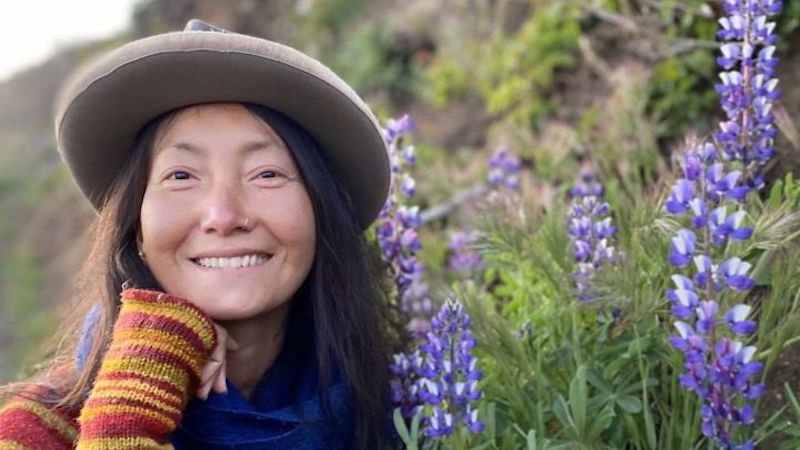
The first time Jovinna Chan was formally introduced to pranayama was in New York City, in an Alexander Technique class.
“I was surprised how much restriction there was in my rib cage,” said Chan. “What blew my mind is that when I pay attention to my breath, I can alter — immediately — my life force, my mood, confidence, and attention. Breath is now a way of life instead of an item on my to-do list.”
In advance of her upcoming workshop, Integration from the Core, Embodiment through Yoga, Dance, and Sound Meditation, Jovinna Chan took a moment to chat about why asana (poses) get more attention than pranayama (breath control) in yoga, and why all parts of the practice are inextricably linked.
Christine Chen: Do you observe pranayama as a lesser-taught practice of yoga in the west? Why/Why not?
Jovinna Chan: Asanas, in general, are still getting more spotlight than pranayama practice in the west. I think it is a natural evolution because of the way yoga was introduced to the west, which was largely through postures practices. And, practicing postures is an easier entry point into yoga as the body is more gross to engage with and easier to see results. I do feel there are more and more people bringing pranayama practices to the class. I believe it will slowly gain more presence.
CC: Pranayama comes after Asana in the 8 Limbs of Yoga. What are your thoughts on this in the applied, modern practice?
JC: Even though the 8 Limbs of Yoga may appear hierarchical, they are connected and quite impossible to separate. I feel if we practice one limb, the rest will follow. Just like when I pick up one bead in the 108 mala bead necklace, the rest of the 107 and the guru bead will come with it too.
CC: What can people gain from committing to a pranayama practice if integrated with movement?
JC: Increased presence, awareness, and preventive health.
CC: How do you honor the culture and roots of this practice when you share it?
JC: I treasure every opportunity to learn the ancient knowledge of pranayama practices. I practice with great reverence and respect for my teachers and honor the wisdom and integrity of the practices with my students.
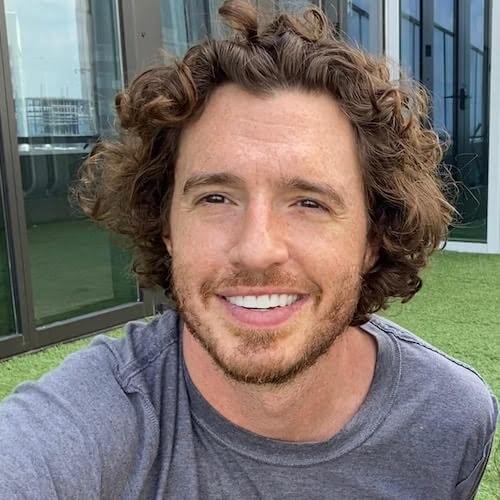
“Remembering to be as self compassionate as I can and praying to the divine that we're all a part of.”
–Aaron
“Prayer, reading, meditation, walking.”
–Karen
“Erratically — which is an ongoing stream of practice to find peace.”
–Charles
“Try on a daily basis to be kind to myself and to realize that making mistakes is a part of the human condition. Learning from our mistakes is a journey. But it starts with compassion and caring. First for oneself.”
–Steve
“Physically: aerobic exercise, volleyball, ice hockey, cycling, sailing. Emotionally: unfortunately I have to work to ‘not care’ about people or situations which may end painfully. Along the lines of ‘attachment is the source of suffering’, so best to avoid it or limit its scope. Sad though because it could also be the source of great joy. Is it worth the risk?“
–Rainer
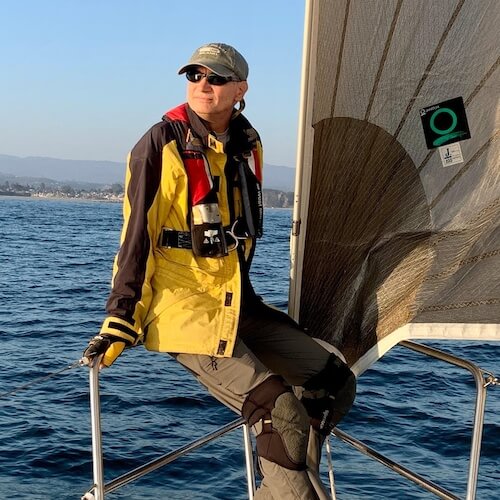

“It's time for my heart to be nurtured on one level yet contained on another. To go easy on me and to allow my feelings to be validated, not judged harshly. On the other hand, to let the heart rule with equanimity and not lead the mind and body around like a master.”
–Suzanne
“I spend time thinking of everything I am grateful for, and I try to develop my ability to express compassion for myself and others without reservation. I take time to do the things I need to do to keep myself healthy and happy. This includes taking experiential workshops, fostering relationships, and participating within groups which have a similar interest to become a more compassionate and fulfilled being.“
–Peter
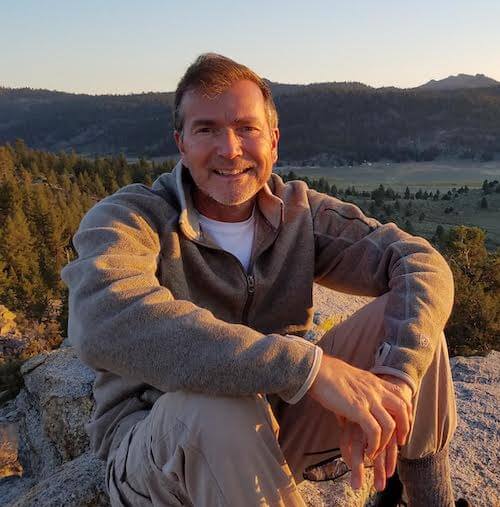
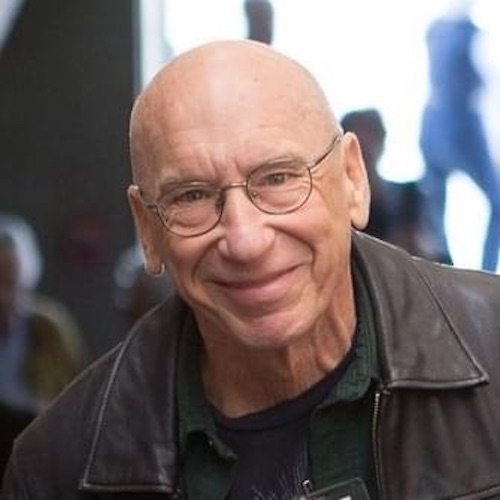
“Self-forgiveness for my own judgments. And oh yeah, coming to Esalen.”
–David B.
“Hmm, this is a tough one! I guess I take care of my heart through fostering relationships with people I feel connected to. Spending quality time with them (whether we're on the phone, through messages/letters, on Zoom, or in-person). Being there for them, listening to them, sharing what's going on with me, my struggles and my successes... like we do in the Esalen weekly Friends of Esalen Zoom sessions!”
–Lori

“I remind myself in many ways of the fact that " Love is all there is!" LOVE is the prize and this one precious life is the stage we get to learn our lessons. I get out into nature, hike, camp, river kayak, fly fish, garden, I create, I dance (not enough!), and I remain grateful for each day, each breath, each moment. Being in the moment, awake, and remembering the gift of life and my feeling of gratitude for all of creation.”
–Steven
“My physical heart by limiting stress and eating a heart-healthy diet. My emotional heart by staying in love with the world and by knowing that all disappointment and loss will pass.“
–David Z.
Today, September 29, is World Heart Day. Strike up a conversation with your own heart and as you feel comfortable, encourage others to do the same. As part of our own transformations and self-care, we sometimes ask for others to illuminate and enliven our hearts or speak our love language.
What if we could do this for ourselves too, even if just for today… or to start a heart practice, forever?
Chan’s workshop, Integration from the Core, Embodiment through Yoga, Dance, and Sound Meditation, is February 21 - 25, 2022.
Christine Chen is a two-time Emmy winning journalist, best-selling author, California native, and senior teacher of yoga and Ayurveda.

The first time Jovinna Chan was formally introduced to pranayama was in New York City, in an Alexander Technique class.
“I was surprised how much restriction there was in my rib cage,” said Chan. “What blew my mind is that when I pay attention to my breath, I can alter — immediately — my life force, my mood, confidence, and attention. Breath is now a way of life instead of an item on my to-do list.”
In advance of her upcoming workshop, Integration from the Core, Embodiment through Yoga, Dance, and Sound Meditation, Jovinna Chan took a moment to chat about why asana (poses) get more attention than pranayama (breath control) in yoga, and why all parts of the practice are inextricably linked.
Christine Chen: Do you observe pranayama as a lesser-taught practice of yoga in the west? Why/Why not?
Jovinna Chan: Asanas, in general, are still getting more spotlight than pranayama practice in the west. I think it is a natural evolution because of the way yoga was introduced to the west, which was largely through postures practices. And, practicing postures is an easier entry point into yoga as the body is more gross to engage with and easier to see results. I do feel there are more and more people bringing pranayama practices to the class. I believe it will slowly gain more presence.
CC: Pranayama comes after Asana in the 8 Limbs of Yoga. What are your thoughts on this in the applied, modern practice?
JC: Even though the 8 Limbs of Yoga may appear hierarchical, they are connected and quite impossible to separate. I feel if we practice one limb, the rest will follow. Just like when I pick up one bead in the 108 mala bead necklace, the rest of the 107 and the guru bead will come with it too.
CC: What can people gain from committing to a pranayama practice if integrated with movement?
JC: Increased presence, awareness, and preventive health.
CC: How do you honor the culture and roots of this practice when you share it?
JC: I treasure every opportunity to learn the ancient knowledge of pranayama practices. I practice with great reverence and respect for my teachers and honor the wisdom and integrity of the practices with my students.

“Remembering to be as self compassionate as I can and praying to the divine that we're all a part of.”
–Aaron
“Prayer, reading, meditation, walking.”
–Karen
“Erratically — which is an ongoing stream of practice to find peace.”
–Charles
“Try on a daily basis to be kind to myself and to realize that making mistakes is a part of the human condition. Learning from our mistakes is a journey. But it starts with compassion and caring. First for oneself.”
–Steve
“Physically: aerobic exercise, volleyball, ice hockey, cycling, sailing. Emotionally: unfortunately I have to work to ‘not care’ about people or situations which may end painfully. Along the lines of ‘attachment is the source of suffering’, so best to avoid it or limit its scope. Sad though because it could also be the source of great joy. Is it worth the risk?“
–Rainer


“It's time for my heart to be nurtured on one level yet contained on another. To go easy on me and to allow my feelings to be validated, not judged harshly. On the other hand, to let the heart rule with equanimity and not lead the mind and body around like a master.”
–Suzanne
“I spend time thinking of everything I am grateful for, and I try to develop my ability to express compassion for myself and others without reservation. I take time to do the things I need to do to keep myself healthy and happy. This includes taking experiential workshops, fostering relationships, and participating within groups which have a similar interest to become a more compassionate and fulfilled being.“
–Peter


“Self-forgiveness for my own judgments. And oh yeah, coming to Esalen.”
–David B.
“Hmm, this is a tough one! I guess I take care of my heart through fostering relationships with people I feel connected to. Spending quality time with them (whether we're on the phone, through messages/letters, on Zoom, or in-person). Being there for them, listening to them, sharing what's going on with me, my struggles and my successes... like we do in the Esalen weekly Friends of Esalen Zoom sessions!”
–Lori

“I remind myself in many ways of the fact that " Love is all there is!" LOVE is the prize and this one precious life is the stage we get to learn our lessons. I get out into nature, hike, camp, river kayak, fly fish, garden, I create, I dance (not enough!), and I remain grateful for each day, each breath, each moment. Being in the moment, awake, and remembering the gift of life and my feeling of gratitude for all of creation.”
–Steven
“My physical heart by limiting stress and eating a heart-healthy diet. My emotional heart by staying in love with the world and by knowing that all disappointment and loss will pass.“
–David Z.
Today, September 29, is World Heart Day. Strike up a conversation with your own heart and as you feel comfortable, encourage others to do the same. As part of our own transformations and self-care, we sometimes ask for others to illuminate and enliven our hearts or speak our love language.
What if we could do this for ourselves too, even if just for today… or to start a heart practice, forever?
Chan’s workshop, Integration from the Core, Embodiment through Yoga, Dance, and Sound Meditation, is February 21 - 25, 2022.

The first time Jovinna Chan was formally introduced to pranayama was in New York City, in an Alexander Technique class.
“I was surprised how much restriction there was in my rib cage,” said Chan. “What blew my mind is that when I pay attention to my breath, I can alter — immediately — my life force, my mood, confidence, and attention. Breath is now a way of life instead of an item on my to-do list.”
In advance of her upcoming workshop, Integration from the Core, Embodiment through Yoga, Dance, and Sound Meditation, Jovinna Chan took a moment to chat about why asana (poses) get more attention than pranayama (breath control) in yoga, and why all parts of the practice are inextricably linked.
Christine Chen: Do you observe pranayama as a lesser-taught practice of yoga in the west? Why/Why not?
Jovinna Chan: Asanas, in general, are still getting more spotlight than pranayama practice in the west. I think it is a natural evolution because of the way yoga was introduced to the west, which was largely through postures practices. And, practicing postures is an easier entry point into yoga as the body is more gross to engage with and easier to see results. I do feel there are more and more people bringing pranayama practices to the class. I believe it will slowly gain more presence.
CC: Pranayama comes after Asana in the 8 Limbs of Yoga. What are your thoughts on this in the applied, modern practice?
JC: Even though the 8 Limbs of Yoga may appear hierarchical, they are connected and quite impossible to separate. I feel if we practice one limb, the rest will follow. Just like when I pick up one bead in the 108 mala bead necklace, the rest of the 107 and the guru bead will come with it too.
CC: What can people gain from committing to a pranayama practice if integrated with movement?
JC: Increased presence, awareness, and preventive health.
CC: How do you honor the culture and roots of this practice when you share it?
JC: I treasure every opportunity to learn the ancient knowledge of pranayama practices. I practice with great reverence and respect for my teachers and honor the wisdom and integrity of the practices with my students.

“Remembering to be as self compassionate as I can and praying to the divine that we're all a part of.”
–Aaron
“Prayer, reading, meditation, walking.”
–Karen
“Erratically — which is an ongoing stream of practice to find peace.”
–Charles
“Try on a daily basis to be kind to myself and to realize that making mistakes is a part of the human condition. Learning from our mistakes is a journey. But it starts with compassion and caring. First for oneself.”
–Steve
“Physically: aerobic exercise, volleyball, ice hockey, cycling, sailing. Emotionally: unfortunately I have to work to ‘not care’ about people or situations which may end painfully. Along the lines of ‘attachment is the source of suffering’, so best to avoid it or limit its scope. Sad though because it could also be the source of great joy. Is it worth the risk?“
–Rainer


“It's time for my heart to be nurtured on one level yet contained on another. To go easy on me and to allow my feelings to be validated, not judged harshly. On the other hand, to let the heart rule with equanimity and not lead the mind and body around like a master.”
–Suzanne
“I spend time thinking of everything I am grateful for, and I try to develop my ability to express compassion for myself and others without reservation. I take time to do the things I need to do to keep myself healthy and happy. This includes taking experiential workshops, fostering relationships, and participating within groups which have a similar interest to become a more compassionate and fulfilled being.“
–Peter


“Self-forgiveness for my own judgments. And oh yeah, coming to Esalen.”
–David B.
“Hmm, this is a tough one! I guess I take care of my heart through fostering relationships with people I feel connected to. Spending quality time with them (whether we're on the phone, through messages/letters, on Zoom, or in-person). Being there for them, listening to them, sharing what's going on with me, my struggles and my successes... like we do in the Esalen weekly Friends of Esalen Zoom sessions!”
–Lori

“I remind myself in many ways of the fact that " Love is all there is!" LOVE is the prize and this one precious life is the stage we get to learn our lessons. I get out into nature, hike, camp, river kayak, fly fish, garden, I create, I dance (not enough!), and I remain grateful for each day, each breath, each moment. Being in the moment, awake, and remembering the gift of life and my feeling of gratitude for all of creation.”
–Steven
“My physical heart by limiting stress and eating a heart-healthy diet. My emotional heart by staying in love with the world and by knowing that all disappointment and loss will pass.“
–David Z.
Today, September 29, is World Heart Day. Strike up a conversation with your own heart and as you feel comfortable, encourage others to do the same. As part of our own transformations and self-care, we sometimes ask for others to illuminate and enliven our hearts or speak our love language.
What if we could do this for ourselves too, even if just for today… or to start a heart practice, forever?
Chan’s workshop, Integration from the Core, Embodiment through Yoga, Dance, and Sound Meditation, is February 21 - 25, 2022.
Christine Chen is a two-time Emmy winning journalist, best-selling author, California native, and senior teacher of yoga and Ayurveda.